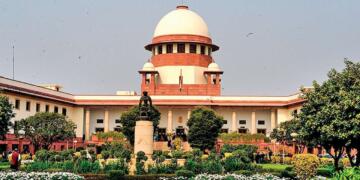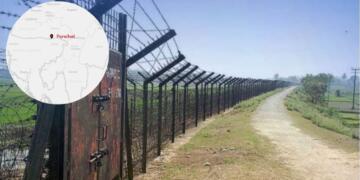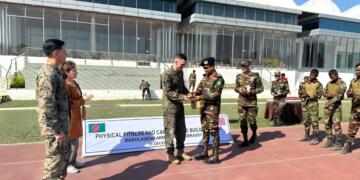In the words of Shyam Narayan Pandey
सेना–नायक राणा के भी
रण देख–देखकर चाह भरे
मेवाड़–सिपाही लड़ते थे
दूने–तिगुने उत्साह भरे
Kneel before the “Shahanshah” was the diktat. Hundreds of kings had surrendered already or had been persuaded to do. There was one person though who dared to stand tall in front of the mighty Mughals. There was one person who dared to challenge the might of Akbar. There were many kings, warriors and fighter and then there was a Maharana Pratap.
Pratap, The eldest son of Maharana Udai Singh II fought against Raja Man Singh led Mughal army. The battle was fought in the narrow valleys of Haldighati near Gogunda; a move orchestrated to stand against an army four times the size of its own.The story of Maharana’s survival, of his family surviving on Ghaas ki Roti (Rotis made out of grass flour) and that of Chetak in helping him jumping across the stream two miles away from the battlefield despite its injuries have been reverberating in the folklore of Mewar since ages but the sad fact is that Maharana, the inspiration for millions, lies forgotten in the history of India.
Through this article I wish to give a fresh perspective to the battle of Haldighati and the life lived by Maharana Pratap after the battle. It is an unmatched example of adaptability, humility, pride, determination, introspection, frugal innovation, strategy & planning, faith, friendship, triumph and everything else that comes along.
Realizing soon enough that his army had lost many men and resources to sustain the battle, Maharana switched to guerrilla warfare from the wilderness of Aravallis, damaging Mughal army to its possible strength through small scale raids and managed to keep his flag above his shoulders. Working with his allies from Bhil tribals, he learned the art of living with minimum means; so much so that Maharana and his family lived feeding on rotis made of grass’ flour. He reallocated his resources to include more light horses that would provide desired speed and agility during these skirmishes. When most of the Kings had signed off their thrones and joined the Mughal Empire, Maharana Pratap stood his ground. So much that he inspired many others including his own brother, Shakti Singh, to change his mind.
The touch of inspiration doesn’t stop here; his kindness had made Abdur Rahim Khankhana to drop his plan to fight Maharana Pratap. The Mughal officers along with women were captured by Amar Singh, son of Maharana while they were camping at Sherpur, planning an assault. When presented to Maharana, he immediately ordered Amar Singh to arrange a safe return for ladies back to their camp. Maharana’s chivalry inspired Rahim so much that he immediately requested to be relieved of his duties from Akbar’s army. We know him by name “Rahim Das” who went on to say “Jo dridh rakhe dharm, ne tahi rakhe kartar” (one who withholds faith will be the one protected by God).
Maharana had a chance to attack on Man Singh when the latter was busy hunting with only a hundred men; but only a man of honour like Maharana Pratap would let such opportunity go and face him in the battlefield.
The enormous faith and conviction had resulted in a timely support from Bhamashah, one of his close aides, to present with enough resources to sustain an army of 25000 men for 12 years. Maharana appointed Bhamashah as Prime Minister. This occurred when Maharana had given up hope looking at condition to which impecuniousness had brought his family to. Bhamashah rose to the occasion as true friend.
With the faith his loyalists had placed upon him, Maharana seized the history by reclaiming most of the Mewar through Battle of Dewar.
Imagining the time he spent fighting for rights and well-being of people, it definitely sends a chill down the spine and inspires pride within that we inhabit a land where legends have once walked.
Quoting Shyam Narayan Pandey again:
लहराती थी सिर काट काट,
बलखाती थी भू पाट पाट।
बिखराती अवयव बाट बाट,
तनती थी लोहू चाट चाट॥
क्षण भीषण हलचल मचा मचा,
राणा कर की तलवार बढ़ी।
था शोर रक्त पीने को यह,
रण-चंडी जीभ पसार बढ़ी
In the words of Shyam Narayan Pandey
सेना–नायक राणा के भी
रण देख–देखकर चाह भरे
मेवाड़–सिपाही लड़ते थे
दूने–तिगुने उत्साह भरे
Kneel before the “Shahanshah” was the diktat. Hundreds of kings had surrendered already or had been persuaded to do. There was one person though who dared to stand tall in front of the mighty Mughals. There was one person who dared to challenge the might of Akbar. There were many kings, warriors and fighter and then there was a Maharana Pratap.
Pratap, The eldest son of Maharana Udai Singh II fought against Raja Man Singh led Mughal army. The battle was fought in the narrow valleys of Haldighati near Gogunda; a move orchestrated to stand against an army four times the size of its own.The story of Maharana’s survival, of his family surviving on Ghaas ki Roti (Rotis made out of grass flour) and that of Chetak in helping him jumping across the stream two miles away from the battlefield despite its injuries have been reverberating in the folklore of Mewar since ages but the sad fact is that Maharana, the inspiration for millions, lies forgotten in the history of India.
Through this article I wish to give a fresh perspective to the battle of Haldighati and the life lived by Maharana Pratap after the battle. It is an unmatched example of adaptability, humility, pride, determination, introspection, frugal innovation, strategy & planning, faith, friendship, triumph and everything else that comes along.
Realizing soon enough that his army had lost many men and resources to sustain the battle, Maharana switched to guerrilla warfare from the wilderness of Aravallis, damaging Mughal army to its possible strength through small scale raids and managed to keep his flag above his shoulders. Working with his allies from Bhil tribals, he learned the art of living with minimum means; so much so that Maharana and his family lived feeding on rotis made of grass’ flour. He reallocated his resources to include more light horses that would provide desired speed and agility during these skirmishes. When most of the Kings had signed off their thrones and joined the Mughal Empire, Maharana Pratap stood his ground. So much that he inspired many others including his own brother, Shakti Singh, to change his mind.
The touch of inspiration doesn’t stop here; his kindness had made Abdur Rahim Khankhana to drop his plan to fight Maharana Pratap. The Mughal officers along with women were captured by Amar Singh, son of Maharana while they were camping at Sherpur, planning an assault. When presented to Maharana, he immediately ordered Amar Singh to arrange a safe return for ladies back to their camp. Maharana’s chivalry inspired Rahim so much that he immediately requested to be relieved of his duties from Akbar’s army. We know him by name “Rahim Das” who went on to say “Jo dridh rakhe dharm, ne tahi rakhe kartar” (one who withholds faith will be the one protected by God).
Maharana had a chance to attack on Man Singh when the latter was busy hunting with only a hundred men; but only a man of honour like Maharana Pratap would let such opportunity go and face him in the battlefield.
The enormous faith and conviction had resulted in a timely support from Bhamashah, one of his close aides, to present with enough resources to sustain an army of 25000 men for 12 years. Maharana appointed Bhamashah as Prime Minister. This occurred when Maharana had given up hope looking at condition to which impecuniousness had brought his family to. Bhamashah rose to the occasion as true friend.
With the faith his loyalists had placed upon him, Maharana seized the history by reclaiming most of the Mewar through Battle of Dewar.
Imagining the time he spent fighting for rights and well-being of people, it definitely sends a chill down the spine and inspires pride within that we inhabit a land where legends have once walked.
Quoting Shyam Narayan Pandey again:
लहराती थी सिर काट काट,
बलखाती थी भू पाट पाट।
बिखराती अवयव बाट बाट,
तनती थी लोहू चाट चाट॥
क्षण भीषण हलचल मचा मचा,
राणा कर की तलवार बढ़ी।
था शोर रक्त पीने को यह,
रण-चंडी जीभ पसार बढ़ी































